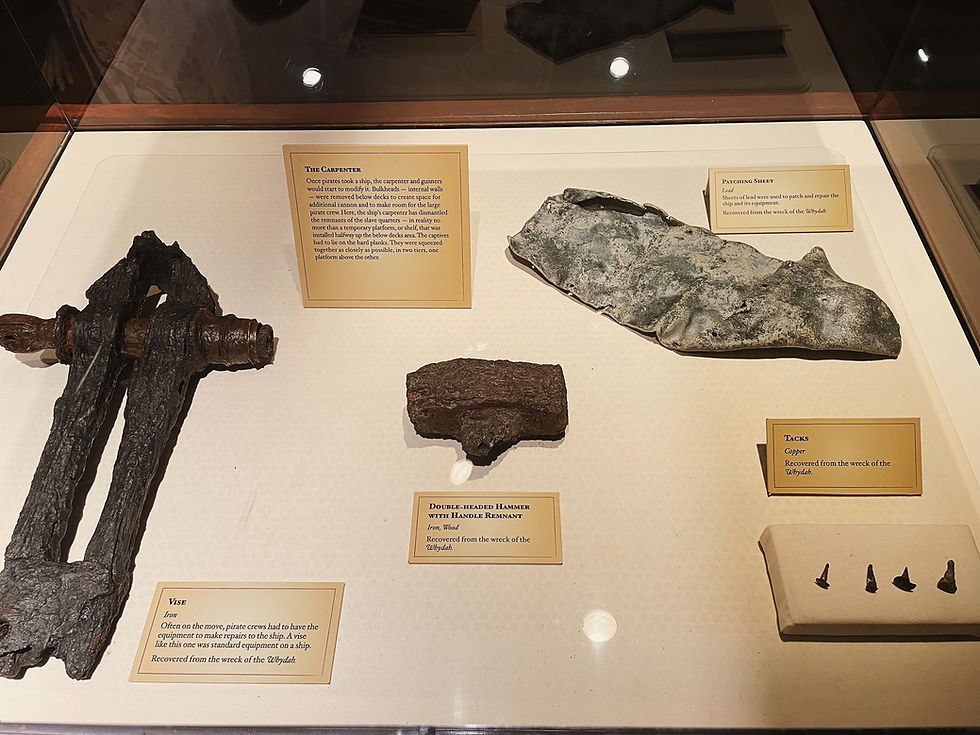A Review: British Saws & Saw Makers from 1660
- marcsitkin
- Apr 8, 2015
- 3 min read
Updated: Oct 26, 2023

It has been rumored for several years that Simon Barley, the noted English saw expert, was working on a book about them. At long last the wait is over; the book is out and has exceeded everyone’s expectations. This volume will be the standard that every future reference book in any genre will be measured against. For that matter, every reference book from the past too. It is a must buy for any serious tool collector, not just saw collectors. It is front and center in my library and I am pleased to offer this review of it.
Simon Barley’s more distant ancestors were tool users. His great, great, grandfather was a shoemaker, his great grandfather was a riveter and boilermaker, his grandfather was an engineer, with his father, a historian, the first in the family to go on in education beyond fourteen years of age. Simon himself worked as a Doctor in various branches of medicine, with spells in teaching and medical writing and editing. He retired at the earliest opportunity to take up practical woodworking in renovating a barn into a house and to grow fruit on a small holding.
His affair with English saws began a long time ago. Sometime around 1998 he met Ken Hawley at his tool shop in central Sheffield, renowned as the place that announced in the window ‘We sell nowt (nothing) but tools’. “I acquired from him my first set of hollows and rounds that helped me get started on moulding planes”. Simon was then several years into a major project of converting the 19th century stone barn into a house and was more and more fascinated by the wonderful hand tools he could use. He was looking for voluntary work and Ken suggested that he catalogue the saws in his collection which was housed by the University of Sheffield in a small old steel warehouse. It soon became evident that there was little known about how saws were made in the days before automatic machinery. Before long he had signed up to write a PhD on the early saw making industry of Sheffield; it only took him nine years… While he was doing it, friends in the tool world suggested that a reference book on saws could usefully fill a gap in the literature. This undertaking only took another six years. Central to the history was also the opportunity to collect on his own behalf. He has been able to amalgamate on one site at the Ken Hawley Collection Trust’s new home in Kelham Island Museum around 2,000 examples. View this collection online at hawleytoolcollection.com on the web. Ken’s recent death was a blow since inside his head was a store of knowledge that didn’t exist anywhere else. Simon would like to say that those who write history books can only do their best with what they know, at the same time acknowledging that what they put down on paper is incomplete and immediately out of date. He hopes there will be a core of permanence in his book, British Saws and Saw Makers from 1660.

The book itself contains a chapter on making a saw, one on where saws were made and by whom, one on dating a saw by design and appearance, one on saw handle fasteners, and one on saw handles. Then he has the saw makers listed A-Z for easy look up. He has included countless photos of saw handles, saw die stamps and etches and saw medallions. In the back of the book are appendixes on types of saws and saw handle makers price lists, as well as a bibliography and list of sources. I would be remiss if I did not mention the forward which contains a bio of Ken Hawley, without whose help this book would have been difficult.
This book is 700+ pages and is the most thorough and complete saw reference book ever published. As a researcher and writer on the subject of early American saws, this book is humbling and is an example to me of what can be accomplished by devoting years of one’s life to it.




Comments